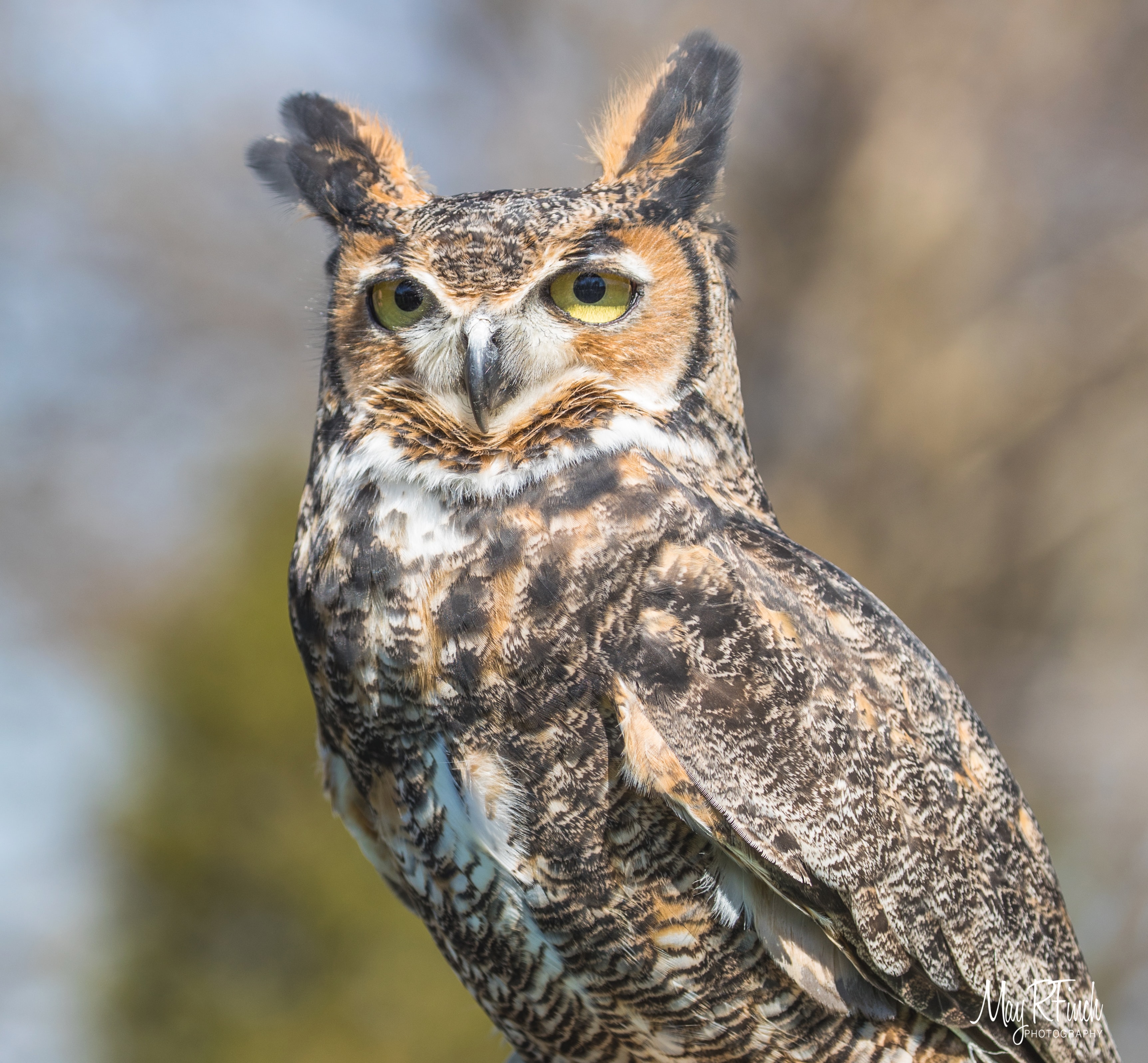Great Horned Owl (bubo virginianus)
category: URBAN AUDUBONENGAGEMENT

An adult Great Horned Owl. Photo: May Finch
GREAT HORNED OWL (BUBO VIRGINIANUS)
The Great Horned Owl, also known as “Tiger of the Woods” or “Hoot Owl,” is a large, fierce, nocturnal predator. Surprisingly, it is also the most common owl in New York City. A permanent resident and nester, it is found in all five boroughs— especially Staten Island, where it has been recorded in as many as seven parks. In recent years, it has nested right along the trail at the Jamaica Bay Wildlife Refuge. And on two occasions, I’ve seen and heard one hooting from a neighbor’s dock in Broad Channel, Queens, in the early morning hours. I believe it was trying to communicate with—or chase away—a fake owl on my neighbor’s roof (meant to deter seagulls and pigeons from landing there).
Great Horned Owls are very adaptable: they live in a variety of habitats throughout the Americas from Alaska to Tierra del Fuego, including deserts of the southwest, suburbia, farmland, urban parks, and up to the northern limit of boreal forests. They eat rats, mice, rabbits, and other small mammals, but will also take larger prey such as skunks, small raccoons, muskrats, and even small dogs and domestic cats. They have been documented snatching young Peregrine Falcons and Ospreys right from their nests.
Great Horned Owls do not make their own nests, but rather use tree cavities or take over the nests of squirrels, hawks, herons, crows, and even Bald Eagles. In a New Hampshire swamp, I observed a pair using a Great Blue Heron nest. In Texas, one nested on a ledge right above the entrance to Lady Bird Johnson’s Wildflower Park. Since these owls are “early nesters,” usually laying eggs in February, they will lay claim to old nests before migratory birds return to them. Once established, even Bald Eagles won’t be able to dislodge them from a nest site despite having nearly twice their wingspan and three times their weight.
In the wild, these owls usually live an average of 13-15 years. Captive owls can live much longer; one captive bird lived to the ripe old age of 38. Adult Great Horned Owls have very few, if any, predators, but young owls that leave the nest too early can be killed by bobcats, coyotes, raccoons, foxes, and other predators.
Causes of mortality of both young and adult owls include illegal shooting, poisoning, and collisions with motor vehicles, telephone and guy wires, and even soccer nets! Long Island wildlife rehabilitator Bobby Horvath told me that in the last two months, he retrieved three Great Horned Owls that had become tangled in soccer nets. The solution may be to cover the nets with canvas when not in use. Although the Great Horned Owl is a “species of low concern,” according to the International Union for Conservation of Nature’s Red List of Threatened Species, North American Breeding Bird Survey data indicates that its population declined by about 33 percent across North America between 1966 and 2015.
As with all raptors, female Great Horned Owls are larger than males; the largest female on record weighed 5.5 pounds. (The average weight is 3.1 pounds.) The bird’s “horns,” technically called “plumicorns,” are actually feather tufts. These may assist with sound transmission, serve to communicate with other owls, or help camouflage the owl’s silhouette while sitting in trees. No one knows for certain. One thing is sure: these majestic raptors have adapted well to human environments and are always an exciting find in New York City’s parks.
(If you encounter a Great Horned Owl while birding, maintain your distance and avoid disturbing it. Do not share or post its exact location. An owl in the City may already be under stress. When flushed from its daytime roost, this nocturnal bird may be harassed by crows, jays, and other birds, and be unable to find another suitable place to rest.)


